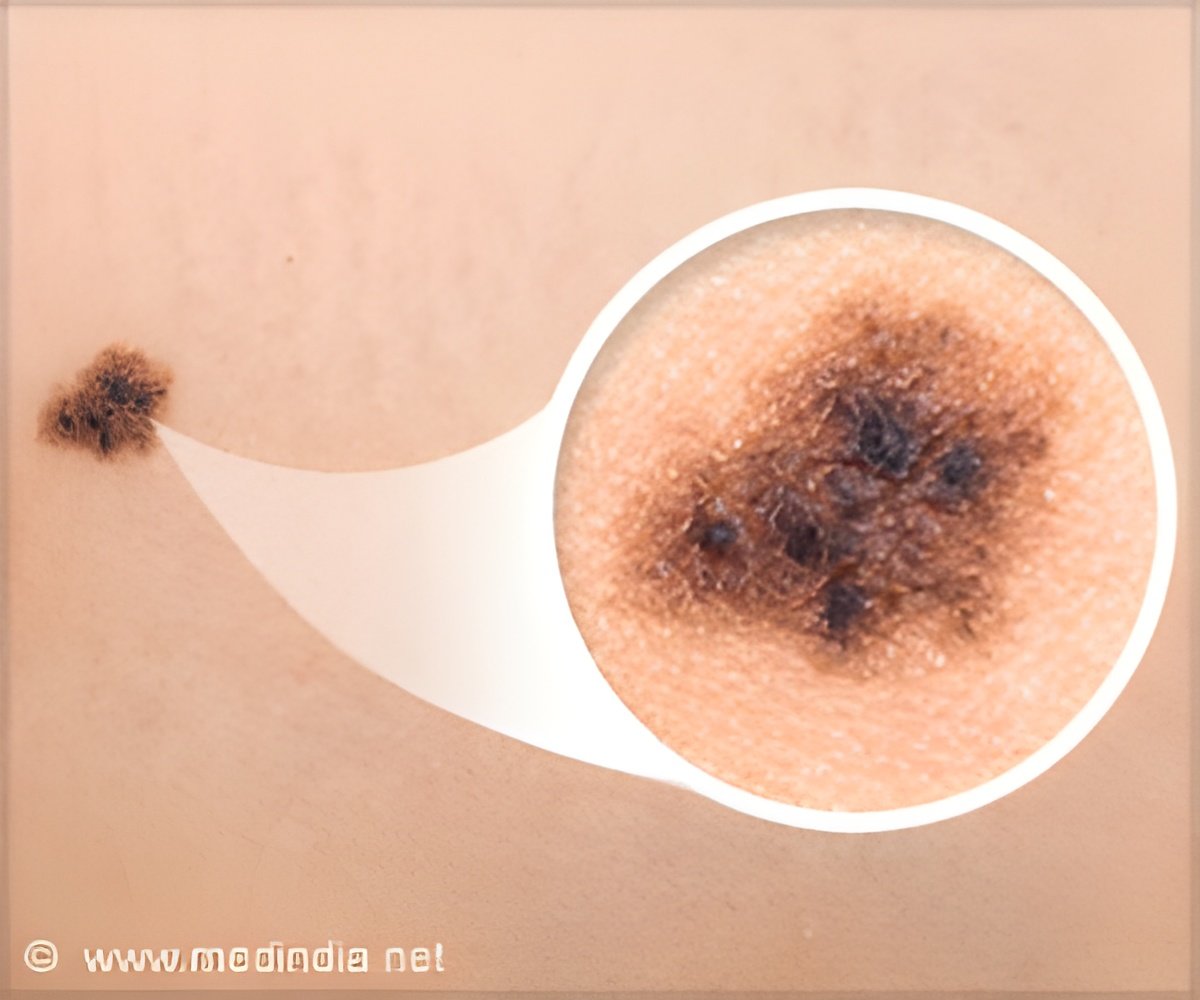Skin cancer can already be detected using terahertz light, but because of the low resolution, the cancer can only be seen after it has grown quite large.

‘Early cancers are usually controlled by natural immune surveillance, which when compromised may permit the development of masses of malignant cells that begin to grow into tumors.’





Terahertz wavelengths fall between microwaves and infrared light on the electromagnetic spectrum. Light in this region is ideal for biological applications because, unlike x-rays, it doesn't carry enough energy to harm tissue. Other research has shown that skin cancer cells absorb terahertz light more strongly than healthy cells, demonstrating that terahertz imaging can be useful for distinguishing between cancerous and healthy tissue. "Skin cancer can already be detected using terahertz light, but because of the low resolution of current imaging approaches, the cancer can only be seen after it has grown quite large," said the research team's leader, Rayko Stantchev of the University of Exeter, UK. "Ideally, we want to detect the cancer early, when it is still small. We hope that high-resolution terahertz images, combined with the ability to take an image quickly, could eventually lead to a device that could detect cancer in the doctor's office."
In Optica, The Optical Society's journal for high impact research, the researchers showed that their near-field approach to terahertz imaging can achieve a spatial resolution of about nine microns and was compatible with compressed sensing and adaptive imaging algorithms that allow three times faster image acquisition than conventional technologies.
In addition to its practical benefits for medical imaging, the research also represents a new way of accomplishing high resolution terahertz imaging. In conventional imaging, spatial resolution is limited by the diffraction limit, which is determined by the wavelength of light used. Although most imaging techniques detect scattered light at some distance from the object being imaged, the researchers overcame the diffraction limit by using a unique setup to measure close, or near-field, interactions of terahertz waves with the object being imaged. Their approach produced a resolution about 1/45 of the wavelength used for imaging.
"This is the first experimental demonstration, for any spectral region, showing that compressed sensing and adaptive imaging can be performed at resolutions much smaller than the wavelength of light used for imaging," said Stantchev. "Showing that this is physically possible will allow engineers and scientists to start to think about the full potential of this approach."
Advertisement
The primary innovation that made the new approach possible was a digital micromirror device (DMD), an array of tiny mirrors that can each be controlled by a computer. The researchers use the DMD to project a pattern of 800nm light onto a silicon wafer, which makes the wafer opaque to terahertz light in areas where the 800nm light hits the silicon. This means that when a terahertz beam passes though the wafer, it creates a patterned terahertz beam on the other side of the wafer that can then interact with an object being imaged. Because the pattern created by the DMD is known, a computer can reconstruct an image of the object based on the detected terahertz light.
Advertisement
"We used these algorithms to determine which regions of the wafer are transparent and which regions are not transparent, essentially creating pixels," said Stantchev. "Because we were using a single-pixel terahertz detector, normally each pixel would acquire one measurement. However, by creating many transparent pixels in one measurement, an image can be acquired more quickly by taking fewer measurements than the number of pixels."
The researchers used their setup to image a variety of objects and showed that the method could distinguish arms of a metallic cartwheel that were spaced about nine microns apart.
Moving towards practicality
"For our current setup, we have to use a very intense laser to make the silicon wafers opaque," said Stantchev. "This laser is very big and expensive, so to make this approach practical we needed to figure out how to do it using a much cheaper and smaller laser."
Stantchev is now working with researchers in the Chinese University of Hong Kong who have created a different optical setup that might be able to make the silicon wafers opaque using a less powerful laser. The researchers are now working together to see if this approach might make it possible to acquire subwavelength terahertz images using a laser that cost around $200 instead of the almost $400,000 laser used for the work reported in the Optica paper.
"This is one step toward making the technique more compatible with biological applications," said Stantchev. "Eventually, we envision a device that could be used in the doctor's office that would quickly reveal if skin cancer is present."
Source-Eurekalert














